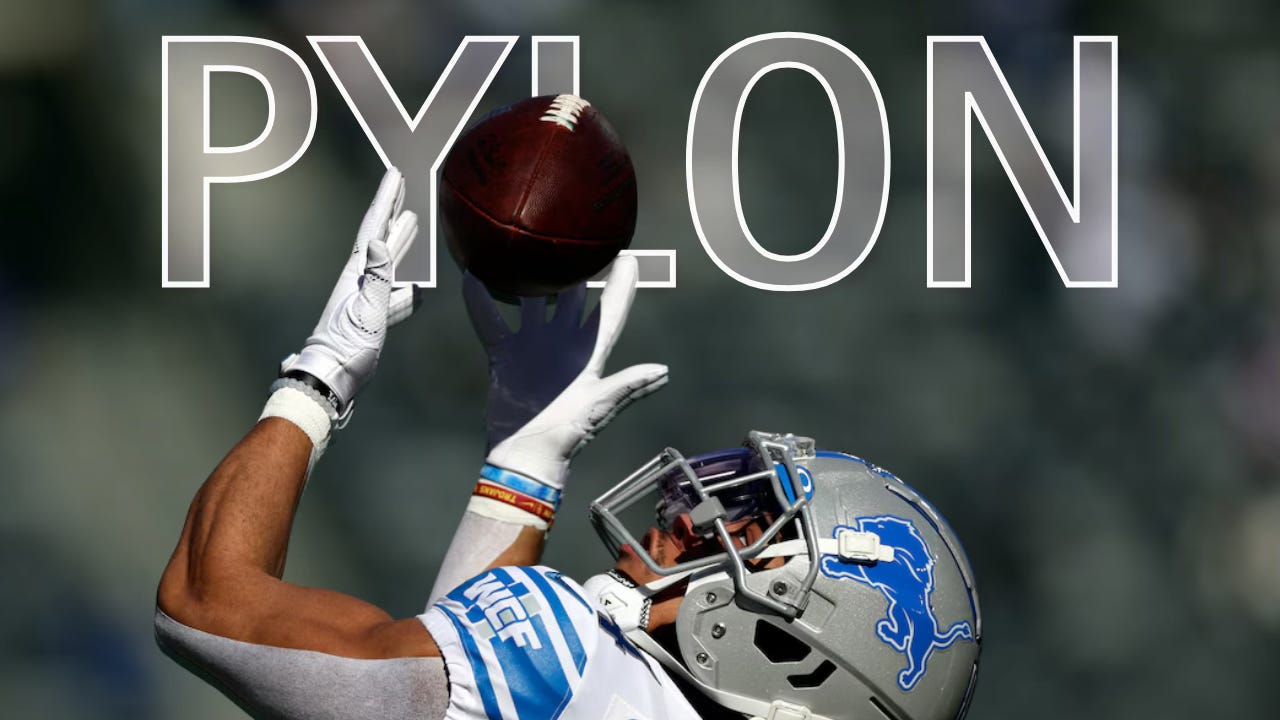How Pylon Routes are Unlocking Explosive Plays
How teams are stretching the field with a different spin on the classic flood.
Every coach knows the classic three-level flood, it’s been a staple for decades. But lately, I’ve noticed more and more teams tweaking it into something different: the Pylon concept.
Instead of attacking vertical space with a traditional post or go, offenses are stretching the field by aiming a deep cross or corner straight at the pylon. It’s a small adjustment, but it’s unlocking explosive plays.
In this breakdown. I’ll show you why this variation works, where it shows up, and how you can think about building it into your own system.
Intro to Pylon Routes
A pylon route is a twist on the classic three-level flood. Instead of using a standard post or corner to stretch the deep defender, the route is aimed directly at the front pylon. Offenses can get there in two ways:
Backside Cross to the Pylon
The backside receiver runs a deep crossing route.
He bends across the field and aims at the front pylon (or back pylon in the red zone).
Think of it as an “over” that keeps running instead of flattening.
Frontside Corner to the Pylon
The frontside receiver pushes vertical and breaks outside toward the same pylon landmark.
It looks like a corner, but it’s extended deeper, stressing the coverage over the top.
This is what makes it different from the standard versions you see every weekend:
A normal cross usually aims to get out of bounds around 18–25 yards, flattening to the sideline.
A normal corner typically breaks at 6–8 steps, or about 10 yards.
The pylon route keeps those same starting points, but stretches them vertically to a common target.
Examples of the Pylon Concept
The beauty of the pylon concept is that it doesn’t lock you into one specific design. The complementary routes: flat control, intermediate sail, backside tags, are up to the imagination of the play caller.
What ties everything together is that deep landmark at the pylon.
Now let’s take a look at how teams are running this concept this year, and why it’s showing up more often in explosive plays.
Keep reading with a 7-day free trial
Subscribe to Coaching Football Insights to keep reading this post and get 7 days of free access to the full post archives.





